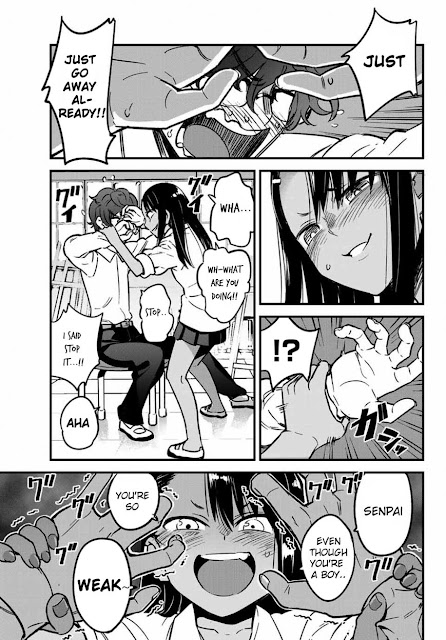I AND THOU, first published in 1923 (though it became a college favorite in the 1960s), was written by a philosopher who had renounced the practice of the Rabbinic tradition but nevertheless incorporated that tradition into his philosophy. I AND THOU, rather than offering a series of reasoned arguments, puts forth a concatenation of incantatory meditations, centered upon Buber’s two schemas of human relationship: the “I-thou” and the “I-it”... Buber calls his two schemas “word pairs.” By this he meant that even though he was well aware that all three words—“I,” “thou,” and “it”—were independent words, he believed that in terms of human relation it was impossible that any “I” could exist apart from its relationship to other phenomena. Only two relationships were conceivable to Buber: either one's "I" related to a "thou" or an "it." Thus he regards his two schemas as “word pairs” that are existentially insoluble. -- PERSONAS OF GRATIFICATION.
I should get some sort of points for originality, for I hypothesize that I'm the only NAGATORO fan who would seek to gloss the appeal of a 21st century Japanese teen humor comic by referencing a 1920s Jewish philosopher. Yet for me, the key to NAGATORO's uniqueness lies in the process by which the character of Naoto, or "Senpai," goes from being an "it" to a "thou" in the eyes of the titular girl-bully.
For many if not all translations, the full title of the manga is PLEASE DON'T BULLY ME, NAGATORO, and I strongly suspect that the commercial translation ditched the word "bully" lest anyone think that the publishers were advocating the practice of bullying, particularly in the context of high-school student interaction. Yet understanding the dynamic of bully and victim is important to seeing how the relationship of the two main characters evolves.
In the first installment of the series proper, the reader knows little about either Naoto or Nagatoro except that he's a bookish-looking second-year high schooler, while she is a mischievous first-year student who's seen doing one athletic feat, doing a kung-fu high kick. But despite being younger than Naoto, Nagatoro instantly assumes a dominant attitude. Not for over a hundred episodes will readers learn what caused Nagatoro to pick on Naoto, whose name she never uses in the entirety of the series. But in the first episodes, the reader is given to understand that "Senpai" is an "it" to the young girl, a subject for inordinate mockery.
Not much changes in the second installment. Nagatoro, having tormented Naoto so much that he breaks down in tears for the first time in his experience, beards him in the young fellow's lair: a school "art club" of which Naoto is the only active member. On the pretext of apologizing for the previous day, Nagatoro insists on providing the artist with a model, though he expresses no desire for one. Because Naoto has been so cut off from interactions with his peers, he can't draw an attractive female sitting right in front of him, and so she mocks his lack of sexual experience (though technically Nagatoro is no more experienced; she just talks a good game). Naoto breaks up again, and to add to his humiliation, he can't even shield his face because she's able to pry his arms apart.
The third installment, however, shows the first movement away from Nagatoro being in an "I-it" relationship with Naoto. A genuine bully is only too happy to continue treating his or her victim as a thing to suffer torment, and jock-bullies are notorious for believing that it's their privilege to dominate those who are weaker. Nagatoro's jock-credentials will be more firmly established in later stories, but after her third foray against Naoto's ego, she's genuinely surprised that he refuses to get angry at her taunts.
Up to this point, the reader also doesn't know why the young artist is so reserved. He then mentally reflects on all the bullies he's known before, and on how he simply kept his head down and refused to interact. In a sense, all previous bullies were also "its" to Naoto, as signified by the fact that he doesn't even recall the faces of his foes. However, he isn't able to distance himself from Nagatoro-- and because he's too reserved to even show obvious sexual stimulation, my conclusion is that he's fascinated by her being in most ways his utter opposite: extroverted where he's introverted, rash where he's hesitant. (One of his more significant observations later in the series is telling his girl-bully, "Everything's like a dare to you.")
In the rom-com genre there are countless stories in which two people start off in an acrimonious relationship ("I-it") and quickly progress to a mutually supportive one ("I-thou"). There are a smaller number of rom-coms in which it's a given that the contrary natures of the romantic pair will result in continuous off-and-on fights. But something about artist Nanashi's approach seems to suggest an attitude that I think compares with Buber's: the sense that both the "it" impulse and the "thou" impulse are integral to human beings generally, and remain so even when true romance blooms-- as I'll show with one more example from the early years of the series.





No comments:
Post a Comment